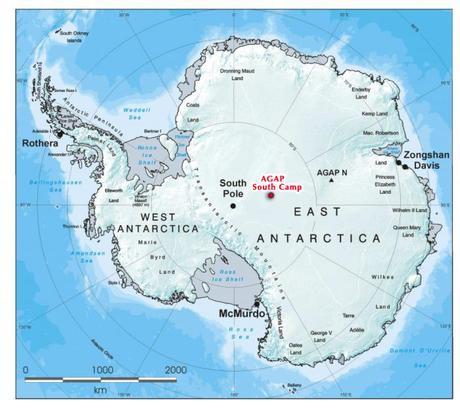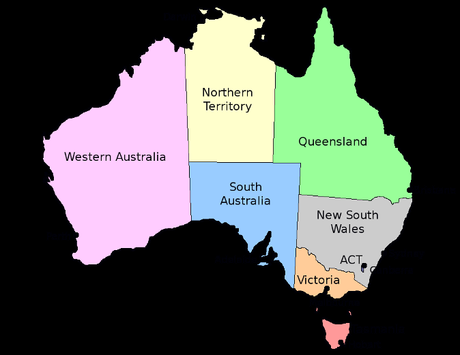List Of 7 Continents Of The World : Today in our modern world we have 7 continents on planet Earth surrounded by the magnificent 5 oceans. Each of these seven continents or giant land masses is diverse and is also distinctly unique with their own natural flora as well as fauna with a wide variety of plants, animals, deserts of all kinds, mountains, rivers, lakes, cultures, and a characteristic weather type which hasn't changed in years of remembrance. A continent is usually larger than a typical island and they are usually made up of multiple countries which span millions of square miles in area.

The 7 continents of the world are namely the evident North America, the vitreous South America, the coldest of all Antarctica, the historical Europe, cultural Asia, largest of all Africa and the good old mate, Australia. Some scholars and intellectuals consider the North and South American continent to be just one landmass referred to as the "American Continent" but others suggest the opposite, likewise some scholars also consider Europe and Asia as a single continent and are also combined at times and referred to as "Eurasia."
Below you will find a comprehensive and detailed analysis of the 7 continents.
Africa

While Africa comes out to be the first alphabetically, it is the second most in both aspects such as population and size among the Earth's all seven continents. Over 1 billion people call Africa as their home. The people of the African continent are spread across 54 different countries throughout Africa. This continent is home to about 15% of the world's entire population and the continent will make up about 20% of the total land area on the planet earth. The equator which passes through the center of the entire continent which provides ideal locations for largely developed warm and/or tropical climates as well. The north and the south portions of the Africa's have more temperate conditions than having tropical regions. Of the continents of the world, Africa is an unique region in which it stretches between the northern and southern temperate zones too. Africa is also attributed with the birth of mankind. The oldest fossil is the very evidence that homo sapiens were first found in the eastern part of the continent.
Africa has a large size and also the extremely varying climates help it to become host to many of the most interesting species of plant and animal Kingdom in Earth.
Antarctica

- Land Area of Antarctica: 5,405,000 (mi²) / 12,949,940 (km²)
- Population of Antarctica: 4,912 (2015)
The sparsely populated continent of Antarctica is positioned to be the southernmost land mass of this Earth. The South Pole which is supposedly the flattest part of the earth's crust can be found here among its large and icy as well as the permanent glaciers and frigid weatherwhich makes the surface almost inhabitable. Even though Antarctica has one of the harshest and the most inhospitable climates as well as they most rigid and diverse terrains on planet Earth, there are still nearly about five thousand people that live on this continent temporarily for their scientific research purposes too and call this continent their home every year. This sparse population makes Antarctica the least populated continent ever which existed on Earth. Antarctica is also known as the coldest landmass yet and has few native and niche plants or animals because most of the continent is always covered in sheets of ice that are sometimes more than a mile thick which leads up to formation of permanent glaciers. You can also rarely find penguins, seals, plants, and fungi in Antarctica with very little occurences of them. Interestingly the continent of Antarctica is the only one which has no reptiles on its land mass naturally.
Asia

Asia is known to cover nearly 9 percent of the earth's surface which makes it the largest of all continents. It's land is also the home to the most people with an estimated population of 4.3 billion as of 2015 censuses conducted by Unesco as well as the local governments this is what represents nearly 60% of the world's population.
With this many people, Asia is now being attributed with becoming a great and a vital part of this world's economy. Asia covers nearly 10% of the planet's surface area and is loosely defined as the eastern portion of the Eurasia.
Australia

The continent of Australia is also synonymous as the magnificent country and hence it includes the mainland of the country Australia were the island regions of New Guinea, Tasmania, and Seram are joined together by a central hub. During ice ages, when most of the world's water of the oceans and the earth was all frozen in the form of glaciers, the Australian mainland was connected by land routes as bridges to these islands and had connected all these small islands together to the mainland. Australia is one of the smallest of all of the 7 continents but is the home to the sixth largest country population which is known by the same name i.e. Australia. The Australian continent of the Indian ocean gets its name from the old but famous latin word 'australis' which literally translates to the meaning southern and most of the Australians are quite famously dubbed as the southees and the aussies.
Europe

The western and the smaller portion of the Eurasian landmasses are now known as Europe. It is noted as the part of the smallest of all the 7 continents after the measly Australia. However, Europe is home to about 11% of Earth's population due to the extensive bloom by the colonial activities of most of the European countries and it is the second most densely populated continent, with approximately 134 people per square mile (data from Unesco reports), behind Asia's who has about 203 people per square mile.
North America

- Land Area of North America:9,540,000 (mi²) / 23,309,892 (km²)
- Population of North America:564,547,963 (2013)
The North American continent is not only the 3rd largest continent but it also seems to be the most developed of all. It includes the developed countries of Canada, United States, Greenland, Mexico and also some of the Latin American regions that serve as a connecting link between the North and the South American continent.
North America land area makes up about 17 percent of the world's landmass and it is currently the home to about 8 percent of the people of the entire world.
South America

The south American continent is sometimes considered as a part of the continent of north America itself but the other way round is also considered true.
South America or popularly known as SUDA AMERICANA is the 4 th largest continent and is the only other continent through which the equator passes out completely making it a tropic and temperate continent with large and dense forests and extremely magnificent waterfalls of the majestic Niagara and the Amazon forest too.
Incoming Search Tags :
